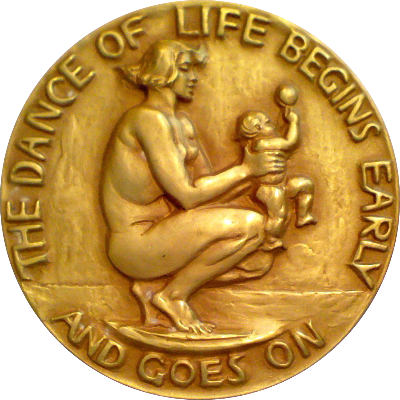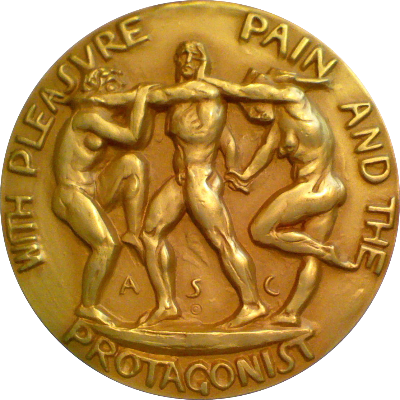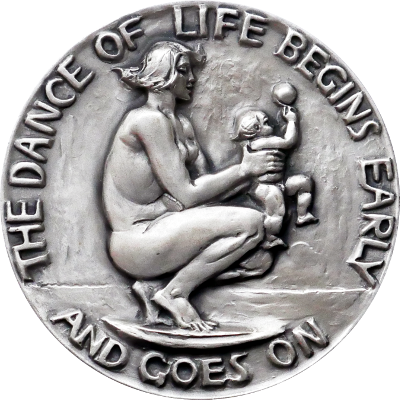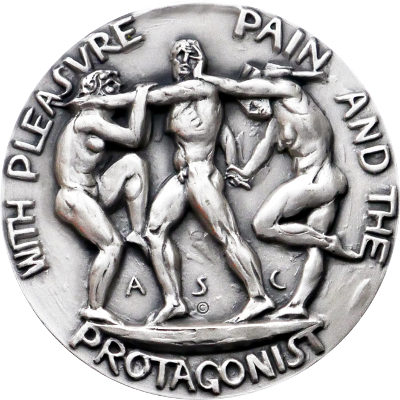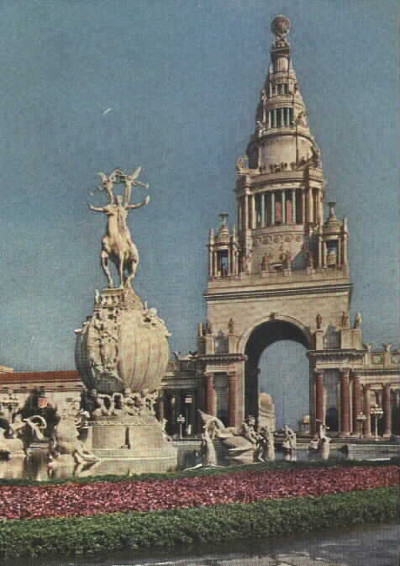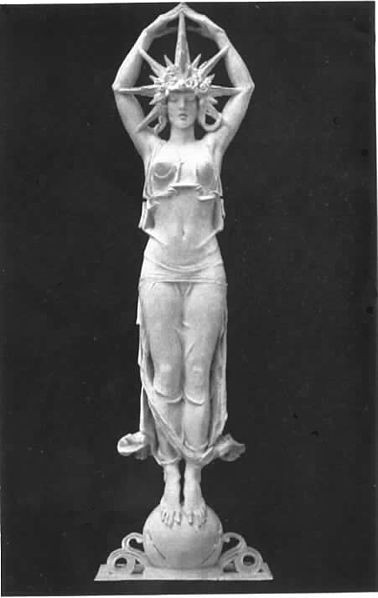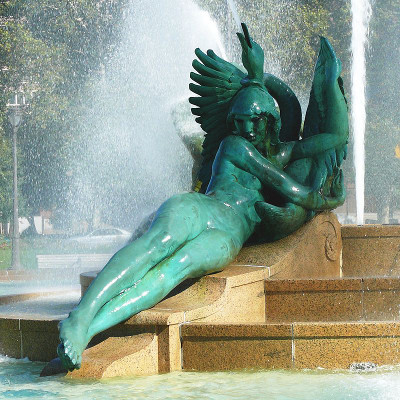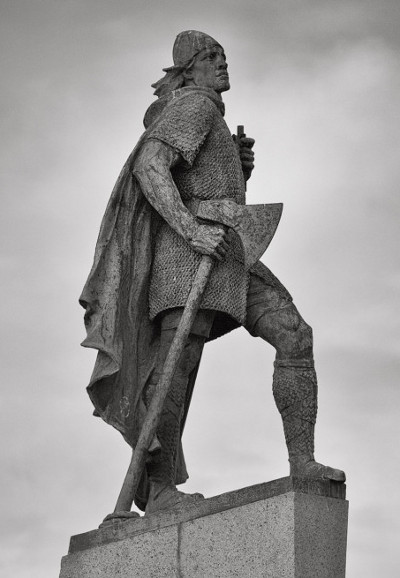Alexander Stirling Calder was born in Philadelphia in 1870, the only son of famed sculptor Alexander Milne Calder. Stirling Calder grew up surrounded by his father's work and very early on decided to follow in his footsteps. At 16, he began studying under Thomas Eakins (who had taught his father as well) at the Pennsylvania Academy of Fine Art and assisting his father with his sculptural work in the Philadelphia City Hall.
Most of Calder's early life and work was based around Pennsylvania, but when given the chance in 1890 to study under Henri Michel Chapu, a French sculptor, at the Académie Julian, he moved to Paris. While there, he also studied under Alexandre Falguière, a portraitist and sculptor, at the École nationale supérieure des Beaux-Arts. Coincidentally, Calder's future wife, Nanette Lederer, was studying to be a portraitist at the Sorbonne and the Académie Julian at the same time, although they did not meet until they were both safely returned to Pennsylvania, Calder in 1892 and Nanette in 1893.
Upon his return to the United States, Calder's career took off. His first major commission, a colossal statue of Dr. Samuel Gross, won him a national competition and was set on the National Mall. Calder gained a reputation as a Beaux-Arts sculptor with talent at creating enormous monuments and an eye for the human form. While he was certainly kept busy by the commissions he received, one of Calder's passions was teaching. He began teaching at the Pennsylvania Academy of Fine Arts, where Nanette was continuing her own studies. After their meeting, Nanette and Calder were married in 1895. They had two children, Margaret and Alexander, also known as Sandy, who became a sculptor in his own right and is considered the creator of the mobile.
In 1905, Calder contracted tuberculosis and relocated to a ranch in Arizona for two years in order to recover. Thereafter, the family moved back and forth between California, New York City, and Philadelphia, depending on where Calder's work drew him. He was involved with an enormous amount of extremely prestigious work, including three sculpture groups at the Panama-Pacific Exposition in San Francisco (1915) called The Nations of the East, The Nations of the West and The Fountain of Energy. The Fountain of Energy's centerpiece was the famous Star Maiden sculpture. In 1924, Calder created the sculptures for the Swann Memorial Fountain in Philadelphia. In 1929, he completed the Leif Eriksson memorial, given to Iceland by the United States to celebrate the 1000th anniversary of the Icelandic Parliament in 1930. The monument is comparable in its iconic value to the Statue of Liberty.
Calder died in 1945 of funnel chest syndrome, a congenital deformity resulting in a concave hollowing of the chest that can interfere with heart and lung function. He lived to see his three grandchildren born and his son's artistic reputation grow to rival his own.
Sourced mainly from Wikipedia.

